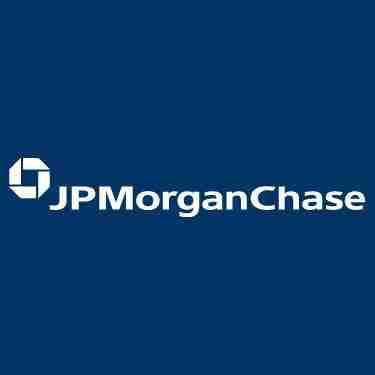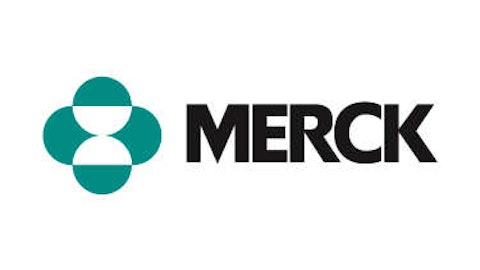In the world of big investment banks, I’m yet to hear a good case as to why JPMorgan Chase & Co. (NYSE:JPM) is not the best in breed. With a great balance sheet, good international exposure, and steadily increasing assets (see below), there are few reasons not to like JPMorgan Chase & Co. (NYSE:JPM). However, with the stock up over 58% since this past May, is there still room to run, or should prospective investors wait for a pullback before jumping in?

JPMorgan Chase & Co. (NYSE:JPM) is one of the world’s largest investment banks, and one of the most respected. They offer clients such services as consumer and business banking, mortgage services, credit card services, investment banking, and investment management to individuals, corporations, municipalities, and other financial institutions.

First, they acquired Bear Stearns in March 2008 (completed in May) in the first major collapse of the crisis. They acquired Bear Stearns for just pennies on the dollar, paying $10 per share for a company that had traded as high as $172 a year earlier. The deal greatly strengthened JPMorgan Chase & Co. (NYSE:JPM)’s commodities and asset management businesses, as well as allowed them to enter the hedge-fund servicing prime brokerage business.
Next, in the largest bank failure in U.S. history, federal regulators seized Washington Mutual and almost immediately made a deal to sell all of its assets (but only certain liabilities) to JPMorgan Chase & Co. (NYSE:JPM) for $1.9 billion. At the time WaMu’s loan portfolio had about $307 billion in assets, of which about $31 billion was considered “bad loans.” This deal greatly expanded JPMorganChase’s footprint into the west and south, particularly California and Florida, which is where a large portion of WaMu’s 2,200 branch offices were located.
These two acquisitions greatly increased JPMorgan’s market share, and for a while made them the largest U.S. bank by deposits.
Recently, aside from a disastrous trade involving a hedging strategy in its Corporate/Private Equity segment produced a staggering loss totaling $6.2 billion; things have been going well for the company. With this mess behind them as of October 2012, the stock has rallied nicely, and currently sits around the $49 level, just 8% below its all-time high before the crisis hit.
Even though it has had quite a run lately (I wish I got in last year!), I think JPMorgan Chase still has a way to go. The stock trades at a relatively cheap 9.4 times TTM earnings, and there is nice growth ahead, according to the consensus. JPMorgan Chase is projected to earn $5.47 per share in 2013, increasing to $5.81 and $6.33 in 2014 and 2015, respectively. This translates to an average forward growth rate of 7.6%, which I believe is very conservative. As the U.S. economy continues its recovery, and Europe begins to straighten out its problems (hopefully), JPMorgan Chase should be able to capitalize on its increased market share, especially if credit conditions loosen a bit over the next few years.
For comparison’s sake, I’d like to take a brief look at two of JPMorgan Chase’s peers, Goldman Sachs Group, Inc. (NYSE:GS) and Wells Fargo & Co (NYSE:WFC). I chose these due to Goldman Sachs Group, Inc. (NYSE:GS)’s focus on investment banking and Wells Fargo & Co (NYSE:WFC)’s focus on consumer banking. I guess since other than JPMorgan, I consider these two to be best-in-breed in their respective areas; they make the most sense for comparisons.
As mentioned, Goldman Sachs Group, Inc. (NYSE:GS) is mostly focused on investment banking and management, and was largely unaffected by the financial crisis, and actually profited in 2007 from shorting mortgage-backed securities. Goldman Sachs Group, Inc. (NYSE:GS) trades at a slightly higher valuation of 10.7 times earnings, however they are projected to grow at a much higher 12% forward rate. I would caution would-be Goldman Sachs Group, Inc. (NYSE:GS) investors; however, as their high leverage ratio creates a higher risk level.
Wells Fargo & Co (NYSE:WFC), with assets of $1.42 trillion, is the fourth largest bank in the U.S, with banking, insurance, investment, mortgage, and consumer finance services. Wells Fargo & Co (NYSE:WFC), like JPMorganChase, profited from the crisis by acquiring Wachovia, which more than doubled their assets. Wells Fargo & Co (NYSE:WFC) is the best play as far as traditional banks go, in my opinion. At 10.5 times earnings and 8% forward growth, they seem to be priced right, however until all of the bad assets inherited from Wachovia are worked out, there is still added risk here.
To sum it up, JPMorgan is the best-in-breed in the financial sector, and offers exposure to virtually all aspects of the financial services industry all over the world. I believe that the acquisitions mentioned earlier were made for bargain prices, and the growth estimates for this company are conservative to say the least.
The article Does The Best Financial Company Have Another Leg Up? originally appeared on Fool.com and is written by Matthew Frankel.
Copyright © 1995 – 2013 The Motley Fool, LLC. All rights reserved. The Motley Fool has a disclosure policy.





